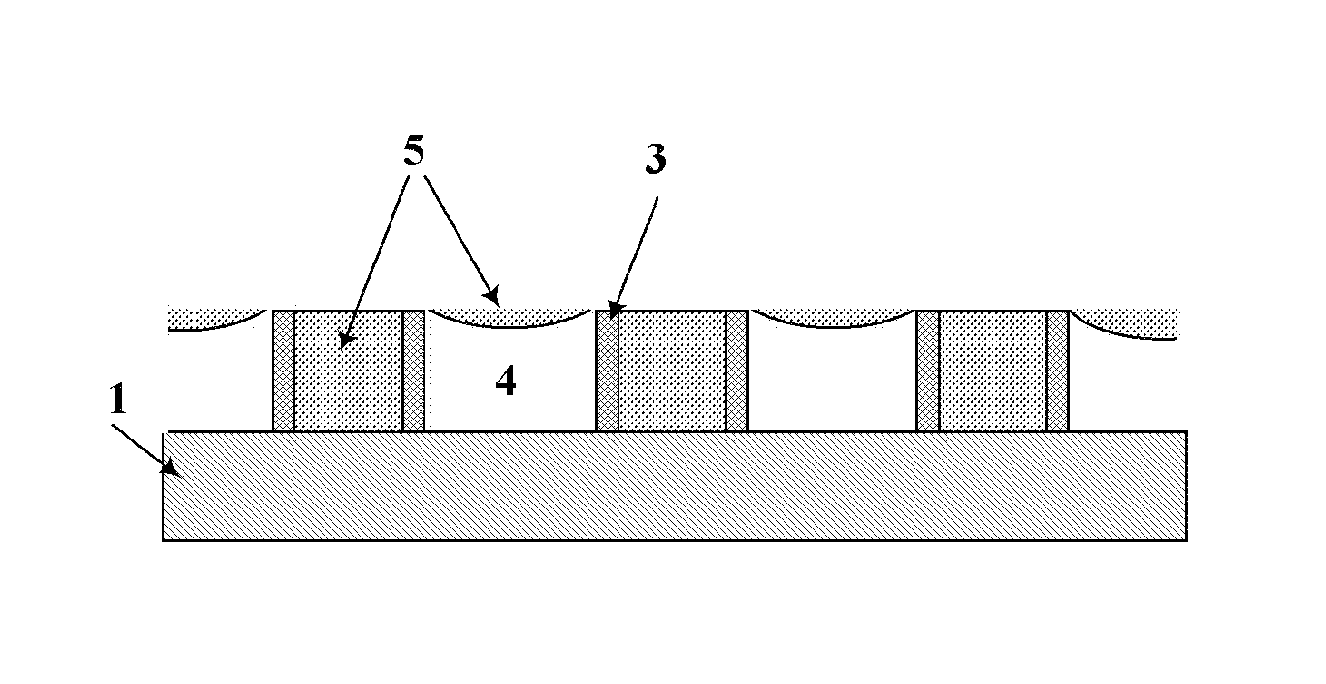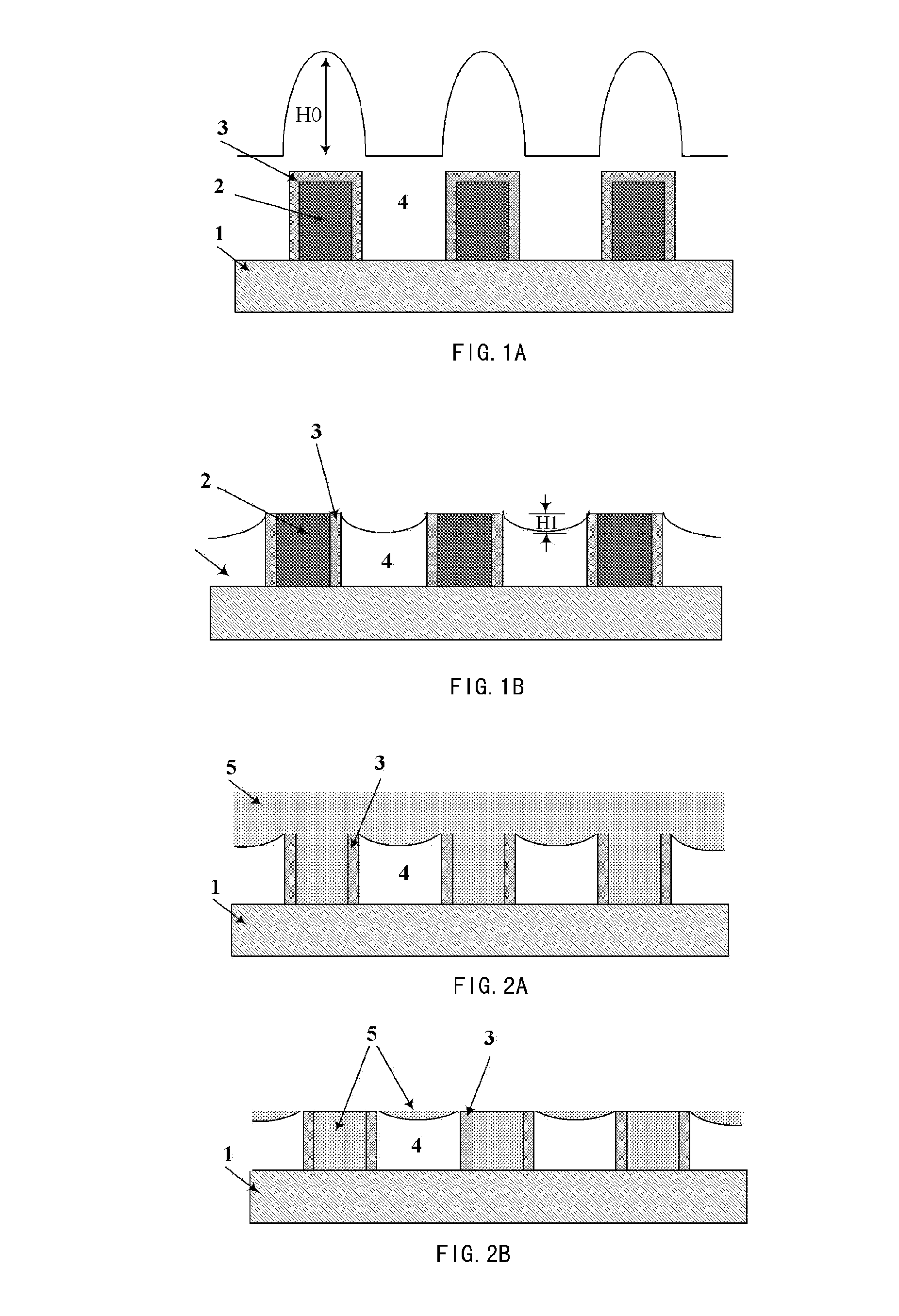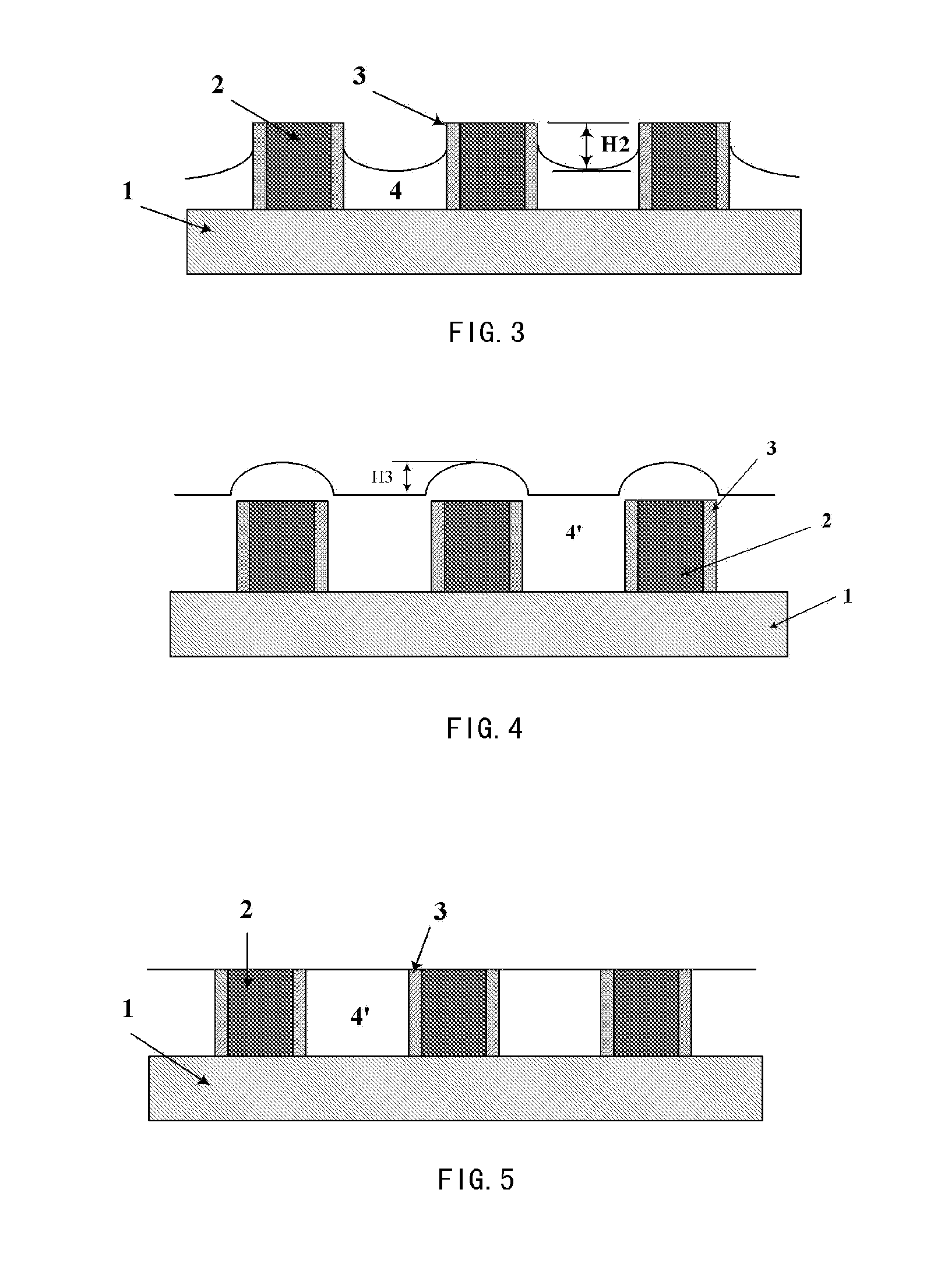Method for improving uniformity of chemical-mechanical planarization process
a chemical-mechanical and process technology, applied in semiconductor devices, semiconductor/solid-state device testing/measurement, electrical equipment, etc., can solve the problems of large gap between silicon oxide and polysilicon gates, the most difficult in the industry, and the inability to effectively eliminate great thickness differences, etc., to achieve the effect of improving the uniformity of the chemical-mechanical planarization process and improving the uniformity of the within-in-di
- Summary
- Abstract
- Description
- Claims
- Application Information
AI Technical Summary
Benefits of technology
Problems solved by technology
Method used
Image
Examples
Embodiment Construction
[0020]In the following text, the features and technical effects of the technical solution of the invention are expounded with reference to the Figures in combination with the illustrative embodiments, and the method for improving the uniformity of chemical-mechanical planarization process is disclosed. It needs to be pointed out that similar reference signs represent similar structures.
[0021]In the POP CMP process, the recess of a dielectric isolation layer formed of, e.g., silicon oxide, which is generated between the features of, e.g., polysilicon gates, substantively is caused by the height difference between the structure and the portion between the features, e.g., source / drain regions; that is, after a dielectric isolation layer is grown, the dielectric isolation layer on the top of the features is higher than that between the features, which is unfavorable to the control of the recess of the dielectric isolation layer between the features in the CMP process. The designing idea...
PUM
 Login to View More
Login to View More Abstract
Description
Claims
Application Information
 Login to View More
Login to View More - R&D
- Intellectual Property
- Life Sciences
- Materials
- Tech Scout
- Unparalleled Data Quality
- Higher Quality Content
- 60% Fewer Hallucinations
Browse by: Latest US Patents, China's latest patents, Technical Efficacy Thesaurus, Application Domain, Technology Topic, Popular Technical Reports.
© 2025 PatSnap. All rights reserved.Legal|Privacy policy|Modern Slavery Act Transparency Statement|Sitemap|About US| Contact US: help@patsnap.com



